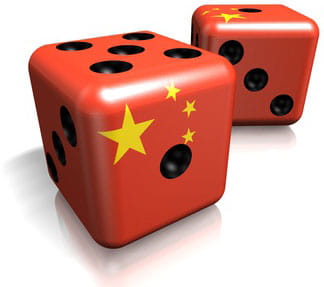Gaming in Shanghai

This case is typical of what vendors face in a competitive, hi-tech environment, and illustrates the opportunity they have to reduce their price. Handled appropriately, a win-win outcome is not difficult to achieve. This negotiation case is published with permission from Dr Bob March's excellent book "Chinese Negotiator".
Overview
HyperHawk, one of the world’s major providers of global supply management software and services, helps companies reduce costs through efficient product and services sourcing. At the time of writing, HyperHawk had handled more than $50 billion worth of products and services in the oil and gas, other natural resources, retail, transport, finance, and industrial sectors for customers including General Motors, Nestlé, Shell, Japan Energy, Mitsubishi, and Cadbury Schweppes.
Shanghai-based JJM, one of the biggest gaming and hospitality companies in Asia, is owned by Chinese businessman Tan Wu Bo. We take up the story when JJM has been a HyperHawk client for six months, and the companies have signed an agreement to conduct two projects. The first, completed in March 2005 and tremendously successful, saved JJM some $1 million, and the second one is set to start. Impressed with the results, JJM wishes to explore the possibility of other joint endeavors with HyperHawk.
To this end, a meeting is arranged between JJM’s Senior Vice-President of Finance Iris Ma and HyperHawk’s Regional Managing Director Drake Dubois, and attended by JJM’s Vice-President for Procurement Henry Chow and HyperHawk Sales Group Director Layton Pang.
Ma is keen to explore more projects with HyperHawk and has tasked Chow to follow up with HyperHawk as soon as possible. The managing director of HyperHawk suggests that a session be arranged with key stakeholders from both companies to discuss and assess possible opportunities for other JJM projects.
The Scene
Ma and Chow agreed to the suggestion and asked that a proposal be submitted to JJM after the opportunity assessment meeting that was attended by Chow, his assistant Mary Xie, who is also the purchasing manager, and two members from HyperHawk. Both parties identified ten possible projects.
Xie asked for a proposal to be submitted to JJM through her, and HyperHawk provided a competitive price package that included services over a twelve-month period. As is to be expected from a Chinese company like JJM, Xie asked for a reduction in the licensing fee, additional program management days (at no extra cost), and an extension of the software term from twelve months to twenty-four months.
In reply, HyperHawk put in writing its discussions to date with JJM:
- JJM had agreed that HyperHawk could add value to the projects identified.
- JJM would sign for a ten-project package to get a competitive price.
- If HyperHawk could meet JJM’s demands, the latter would sign the contract by May-end 2005.
Xie agreed to point one above, but was noncommittal on points two and three. After much discussion, HyperHawk agreed to lower its fee and provide JJM additional program management days at no additional cost. However, HyperHawk said it could not agree to extend the twelve-month term for use of the software without charging extra.
Then, to complicate matters further, Xie suggested that JJM could not commit to an agreement even if all the issues were resolved. The most recent negotiations were conducted quite hastily since HyperHawk knew that Xie was not the decision maker and approval had to come from her top management. Many Chinese companies put in place a structure whereby the foreign negotiator deals with multiple tiers of negotiators before working through the final deal with the senior key decision maker.
Negotiations to Date
HyperHawk’s team had received some of the best sales training available. HyperHawk’s primary concern was how likely JJM would be to enter into an agreement even if the issues were resolved, and within what time frame.
JJM argued that the proposed price was beyond what it could afford, although it recognized the need for help from HyperHawk to implement the projects, and that it needed twenty-four months to implement the ten projects due to its lack of manpower.
HyperHawk took the position that, while it was prepared to look into the fee structure and program management term as part of the total package, the request for twenty-four months was not reasonable. Although it reasoned that other organizations were able to implement ten projects in twelve months, to satisfy JJM, HyperHawk negotiated a mid-way solution: a maximum of eighteen months.
When one week passed and there was no response from JJM, Hyper- Hawk asked if it would be prepared to sign if HyperHawk acceded to its three requests. Xie replied that she would submit the proposal for approval to her superiors, Tan and Ma, but added that there was no guarantee the agreement would be signed by the end of May.
From HyperHawk’s perspective, all the issues presented by JJM had been resolved—yet there was still no deal. When asked about the status of the project, JJM cited staff turnover, but then mentioned another possible IT project where there was a clear need for HyperHawk. The discussion ended with JJM requesting that HyperHawk prepare the preliminary work and submit yet another proposal.
Based on the updated information, it appeared that the IT project might get underway earlier than the previously proposed ten projects. Moreover, given that this project had an entirely different scope, there was a strong argument to negotiate a separate deal for it. Whichever proposal JJM wished to undertake first, HyperHawk was ready to negotiate and finalize an agreement, but it could not yet tell whether the latest development was a genuine project or a further stalling tactic.
Evaluation of Negotiations
Both parties acted rationally in the way the negotiations were conducted, and it helped that the relationship between them was excellent from the start.
HyperHawk gave in to JJMs demands in the hope of concluding the agreement quickly and starting the projects. But JJM only introduced a new project, which took the parties away from the initial negotiations. It was clear to HyperHawk that JJM believed it had to win negotiations with vendors, perhaps a result of its corporate culture.
Meanwhile, JJM believed it was negotiating from a position of strength, having even gone so far as to assert that it had in-house a system similar to that of HyperHawk that could probably fulfill its needs, albeit without the sophistication of the HyperHawk product.
Going forward, it was critical that HyperHawk engage with Ma, the senior vice-president and decision maker, since the groundwork had been laid with her staff. But it was unclear if approaching Ma from the start would have expedited the negotiations.
HyperHawk reflected that maybe it should have asked for the agreement to be signed within a fixed time when it met JJM’s initial demands, although JJM had previously delayed decision making on other projects. Perhaps HyperHawk initially should have found out how urgently JJM wanted to implement the projects and only then have proceeded with the negotiations.
Hyperhawk’s experience certainly highlights the need to be patient when negotiating with the Chinese.
Commentary
This case is typical of what vendors face in a competitive, hi-tech environment, and illustrates the opportunity they have to reduce their price. Handled appropriately, a win-win outcome is not difficult to achieve. The buyer here assumed that the vendor could bargain from the standpoint of a large margin, while the vendor, who employs well-paid professionals, had to think of the high overheads to be maintained.
From this case study, at least two scenarios for short-term success can be derived. First, assuming that you, the vendor, are taking a tough stance, you can take a long-term perspective and conclude the first sale with a friendly, competitive attitude, countering the buyer’s demands with suitable offers, while never losing sight of your determination to bag the order. But, besides showing friendliness, flexibility, and determination, you must show the potential buyer that you will be there for them over the long haul. For this, you require people with leadership qualities in your team.
Should you lack high-quality leaders in your team, you have the option of a second scenario. In this case, you would show, right from the beginning, that your team comprises hard workers who will do whatever the buyer needs. By adopting Chinese-style service orientation and dedication — making your team indispensable to the potential buyer, being available daily, and making yourself virtually a part of your opposite number’s staff—you could clinch a deal.
HyperHawk failed to show the requisite service orientation and commitment. From the perspective of longer-term success, an initial achievement provides the opportunity for friendship to be cultivated with the client company’s key people, perhaps even with the CEO, the final decision maker.
Should one eventually become accepted as “family,” the client will telephone you for what they want and no longer require competitive quotations. But to reach that point, you will have had to develop a genuine friendship and service orientation with those at the top of the client company.
YOU MAY ALSO LIKE








Are the negotiations in the case study an example of distributive or integrative
ones?